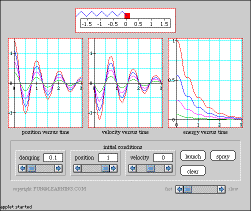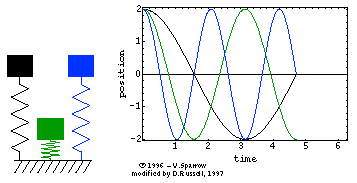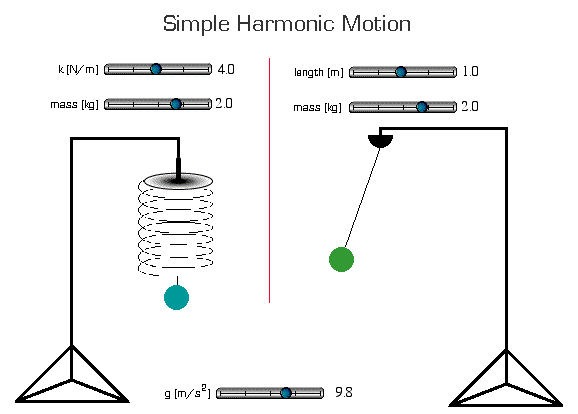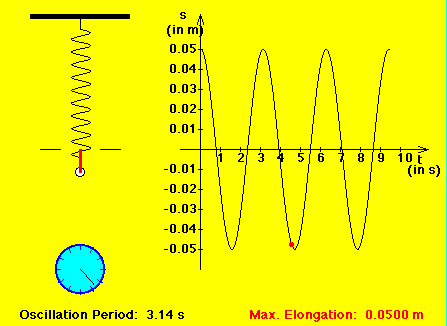
by Professor Mark Sutherland, University of Toronto.
http://thorin.adnc.net/~topquark
/fun/JAVA/dho/dho.html
Control the initial amplitude and damping coefficient for a mass attached to a spring. Displacement, velocity and energy versus time are plotted.
Professor Sutherland has a collection of physics applets and tutorials at fun@learning.physics.


